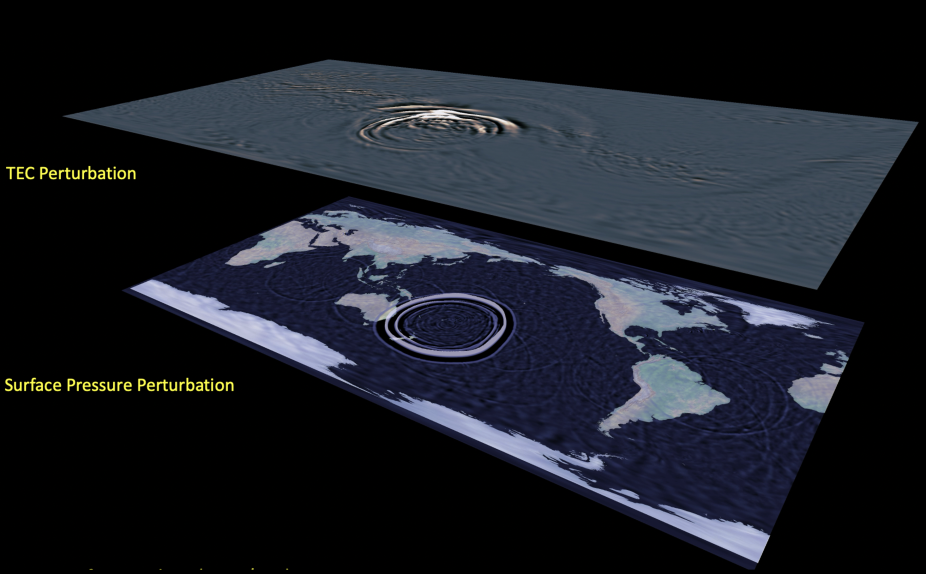Geospace Applications
The geospace environment is driven both by the variable solar forcing at its outer boundary and the disturbances from the lower atmosphere. SIMA Geospace aims to improve the representation of the complex and multiscale interactions within the atmosphere-ionosphere-magnetosphere system. It builds upon the CESM/WACCM-X, and will further develop the model capability for high-resolution and non-hydrostatic simulation of space weather events. It also aims to build whole geospace modeling capability through coupling with the GAMERA magnetosphere model. The latest generation dynamical cores in CAM (Spectral Element and MPAS) are highly-scalable and can accommodate the large computational requirements of the high resolution geospace simulations. Flexible and efficient regridding scheme that maps fields between geometric and geomagnetic coordinates has also been developed as part of the model infrastructure. Currently the SIMA geospace configuration enables simulations with ~28 km horizontal resolution/0.1 scale height vertical resolutions. This is the first time such resolution is achieved in whole atmosphere models, and fine-scale gravity waves and mesoscale structures prominent during geomagnetic storms are captured in the simulations.
The high resolution SIMA/WACCM-X configuration with Spectral Element (SE) dynamical core has been applied to simulate the whole atmosphere/geospace response to the Hunga-Tonga volcano eruption.
Lead: Hanli Liu, NCAR

This plot shows the surface pressure perturbation (lower layer) and total electron content (TEC) perturbation (upper layer) from the simulation. A visualization of this simulation is available on YouTube.
Simulation results (January and February) are available from Globus (with a free registration of a Globus account).
(Liu et al., 2023, https://doi.org/10.1029/2023GL103682).